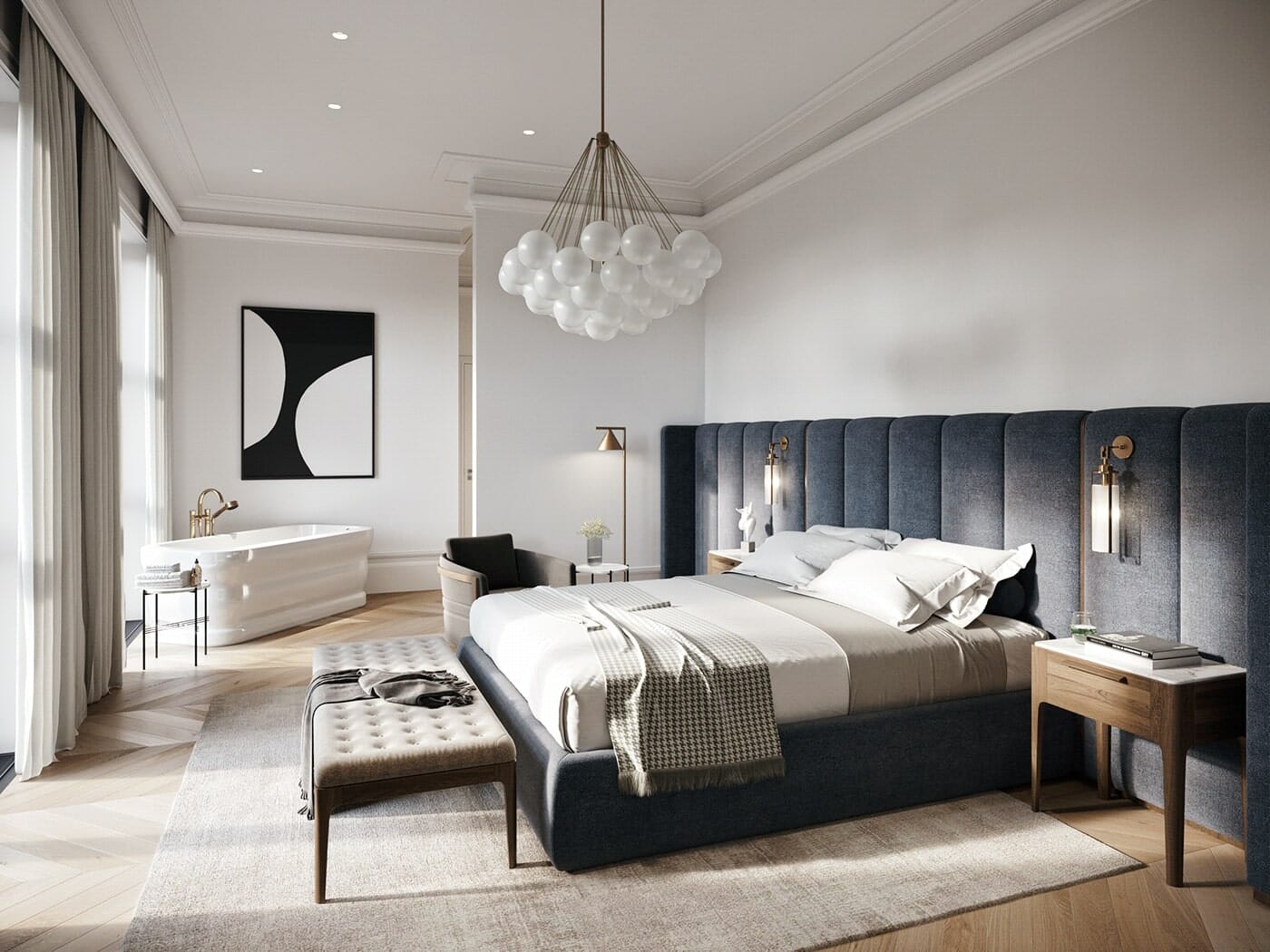The master bedroom is more than just a place to sleep — it’s your personal retreat, a space to relax, reflect, and recharge. Decorating this room with style and harmony is not just about aesthetics, but also about creating an environment that supports your well-being and reflects your personality.
Whether you’re starting from scratch or looking to refresh your space, this guide will help you design a master bedroom that is both beautiful and balanced.
Define Your Vision and Purpose
Before buying any furniture or choosing colors, start with a clear idea of what you want your bedroom to feel like.
Ask yourself:
- Do I want a cozy, romantic, modern, or minimalist space?
- Which colors make me feel calm and comfortable?
- What furniture and materials suit my lifestyle?
Having a vision helps guide all the decisions you’ll make — from the color scheme to furniture selection — and ensures a cohesive final result.
Choose a Calming and Cohesive Color Palette
Color plays a key role in setting the tone of your bedroom. For a space that feels harmonious and stylish, opt for soothing, soft tones that create a sense of relaxation.
Color palette ideas:
- Neutrals + warm accents: Soft gray, beige, and ivory paired with gold or terracotta.
- Earthy tones: Olive green, taupe, clay, and muted browns.
- Cool calming hues: Light blue, lavender, sage green.
Avoid overly bright or saturated colors that can feel stimulating or chaotic.
Invest in a Comfortable and Stylish Bed
The bed is the focal point of the master bedroom, both visually and functionally. Invest in a high-quality mattress and choose a bed frame that matches your style.
Styling tips:
- Consider a padded or tufted headboard for a luxurious look.
- Layer your bedding with neutral sheets, cozy throws, and textured pillows.
- Add three layers of pillows: sleeping pillows, decorative shams, and accent cushions.
A beautifully styled bed instantly makes the room feel more polished and inviting.
Select Matching Furniture in the Right Scale
Harmony is all about balance. Choose furniture that not only fits the style of the room but also the size.
- In small bedrooms, use light-colored or minimalistic furniture.
- In larger spaces, you can incorporate a bench at the foot of the bed, accent chairs, or larger nightstands.
- Avoid overfurnishing — every piece should have a purpose and allow for easy movement.
Optimize the Room Layout
The layout of the bedroom should prioritize comfort and functionality. Start by placing the bed in a central position, preferably facing a window or a feature wall.
- Allow space to walk comfortably around all sides of the bed.
- Position storage units (closets, dressers) in easy-to-access areas.
- If space permits, create a reading nook or makeup station.
Good circulation and balance in furniture placement contribute to the room’s serenity.
Use Lighting to Set the Mood
Lighting is crucial in establishing a relaxing and stylish atmosphere. Use a combination of general, task, and ambient lighting to create layers.
Must-haves:
- Overhead lighting (like a pendant or chandelier) for general brightness.
- Bedside lamps for reading or soft evening light.
- LED strips or backlighting behind the headboard or furniture for subtle ambiance.
- Consider dimmers to control brightness and shift moods throughout the day.
Add Natural Elements
Natural materials and greenery bring balance and freshness to a room.
- Add indoor plants such as snake plant, peace lily, or pothos.
- Incorporate wood furniture, rattan baskets, or linen curtains.
- Use natural textures (cotton, wool, jute) for rugs, blankets, and throws.
These elements soften modern or industrial spaces and promote a restful environment.
Style the Walls Without Overcrowding
Walls offer an opportunity to add character without taking up floor space. But moderation is key — aim for impact, not clutter.
Wall decor ideas:
- Hang a large piece of art or a canvas above the bed.
- Create a gallery wall using matching frames and a unified color palette.
- Use wallpaper or a textured accent wall behind the bed for interest.
- Add a mirror to reflect light and make the space feel larger.
Keep It Organized and Minimal
A messy bedroom disrupts peace and relaxation. Good organization helps you maintain a serene and welcoming space.
- Choose nightstands with drawers to hide clutter.
- Use baskets, under-bed storage, or floating shelves to maximize space.
- Maintain only the essentials and clean regularly.
Less is more when it comes to creating a tranquil master bedroom.
Include Personal Touches with Care
While minimalism is important, don’t forget to personalize your space.
- Display favorite books, artifacts, or souvenirs from your travels.
- Use scented candles, essential oils, or incense for sensory appeal.
- Choose textiles and artwork that reflect your personality and style.
The goal is to feel like the room belongs to you without it feeling visually overwhelming.
Create a Stylish and Harmonious Retreat
Designing a master bedroom with style and harmony is about finding the right balance between aesthetics and comfort. Focus on soft colors, layered textures, thoughtful lighting, and personal details. Prioritize layout and organization, and bring in natural elements to add life and warmth.
When done right, your master bedroom will not only look stunning — it will become your favorite place to unwind, reset, and truly feel at home.
